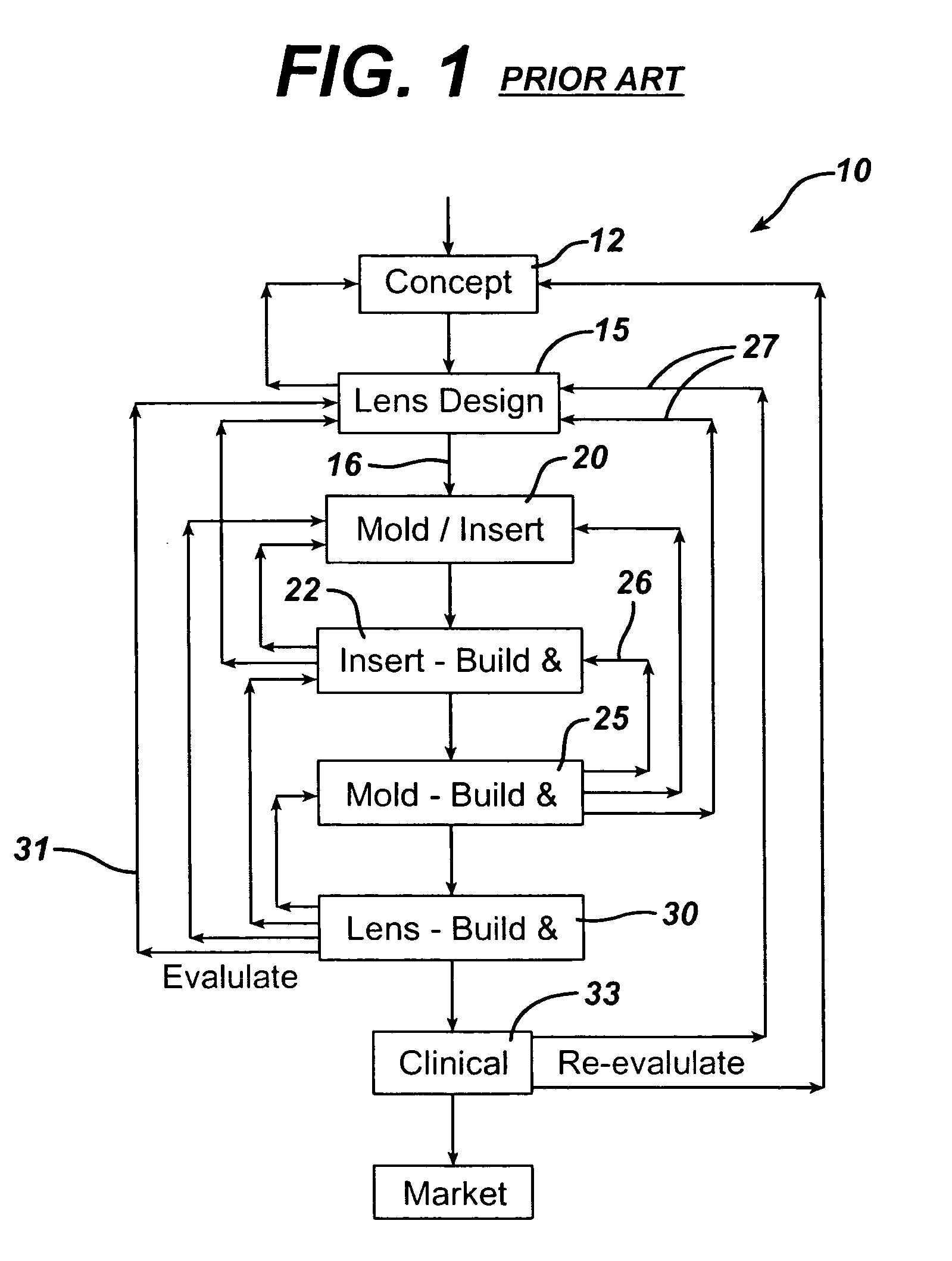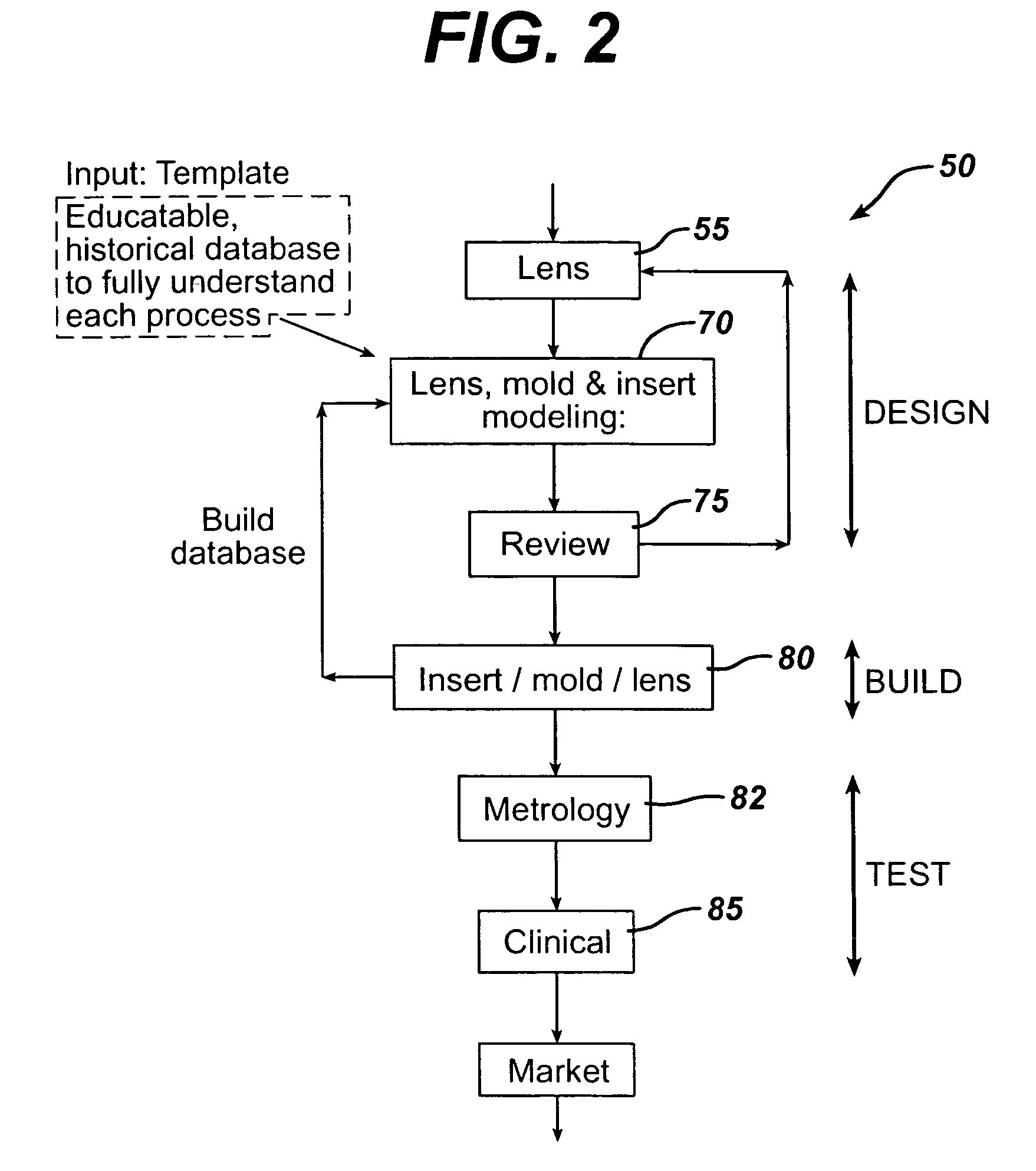Design build test cycle reduction
a technology of design build and test cycle, applied in the field of contact lens, lens mold & insert design and manufacturing arts, can solve the problems of not being able to model 100% accurately what is actually happening in the physical process of making contact lenses, custom developed design software can be very complex and evolve, and achieves the effect of minimizing errors, fast finding any system flaws, and 100% accuracy
- Summary
- Abstract
- Description
- Claims
- Application Information
AI Technical Summary
Benefits of technology
Problems solved by technology
Method used
Image
Examples
Embodiment Construction
[0038]The robust ophthalmic lens design and modeling system providing efficiencies for rapid design and build and test (DBT) manufacturing phases according to the invention is illustrated in FIG. 2. As shown in FIG. 2, the design and build and test (DBT) manufacturing phases is substantially streamlined than the prior art system of FIG. 1 due to the benefits of the modeling system efficiencies. Particularly, after a lens design step 55, there is performed a lens model generating step 70 for the generation of a lens modeling template associated with that design and which comprises all the manufacturing data required for its manufacture within specifications. Preferably, the template specifies data including: lens design parameters (e.g., power, diameter, base curve and center thickness, cylinder, various radii and zones, etc.), FC and BC core surface specifications, and manufacturing process parameters (such as shrinkage of plastic from the insert, for example, and / or hydration of th...
PUM
| Property | Measurement | Unit |
|---|---|---|
| Shrinkage | aaaaa | aaaaa |
| Reduction potential | aaaaa | aaaaa |
Abstract
Description
Claims
Application Information
 Login to View More
Login to View More - R&D
- Intellectual Property
- Life Sciences
- Materials
- Tech Scout
- Unparalleled Data Quality
- Higher Quality Content
- 60% Fewer Hallucinations
Browse by: Latest US Patents, China's latest patents, Technical Efficacy Thesaurus, Application Domain, Technology Topic, Popular Technical Reports.
© 2025 PatSnap. All rights reserved.Legal|Privacy policy|Modern Slavery Act Transparency Statement|Sitemap|About US| Contact US: help@patsnap.com



